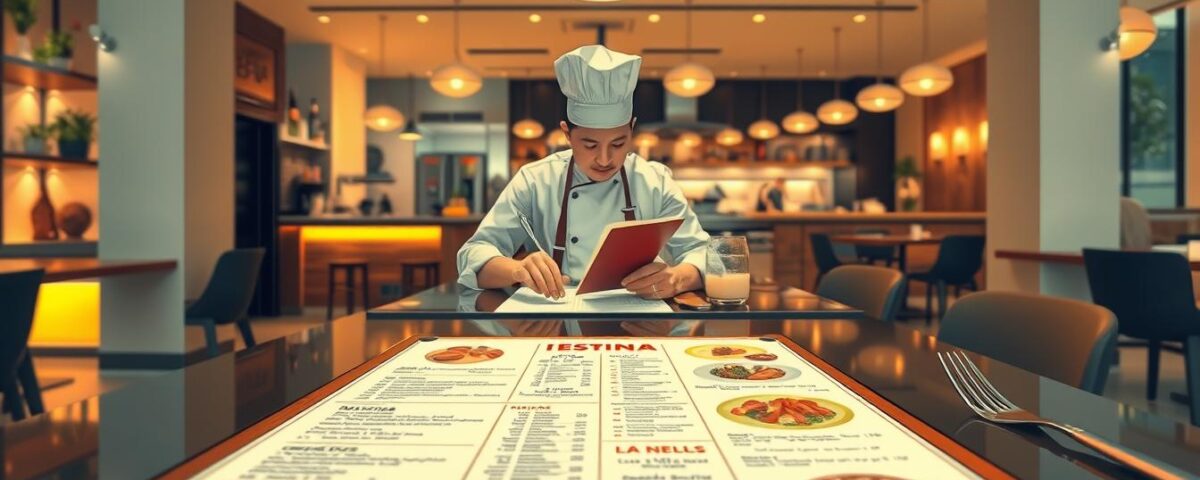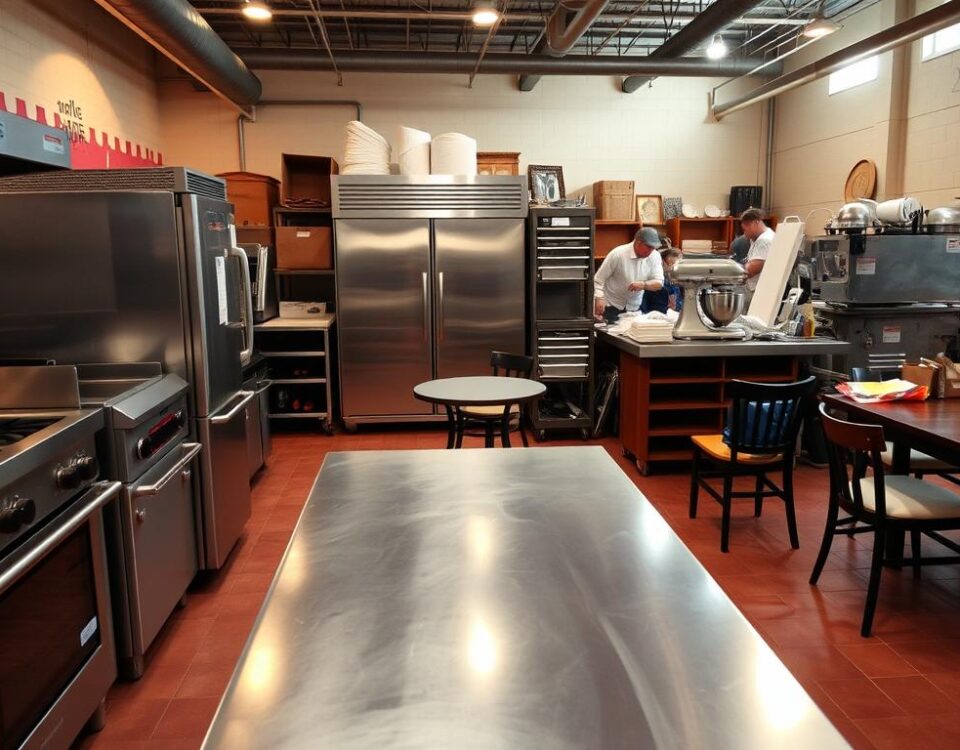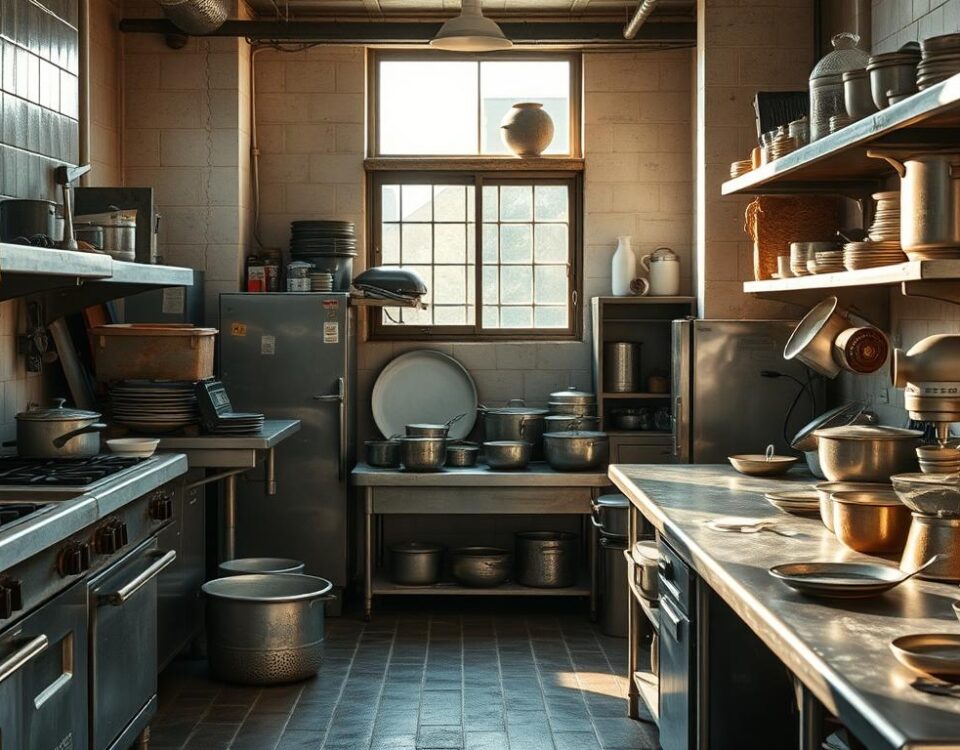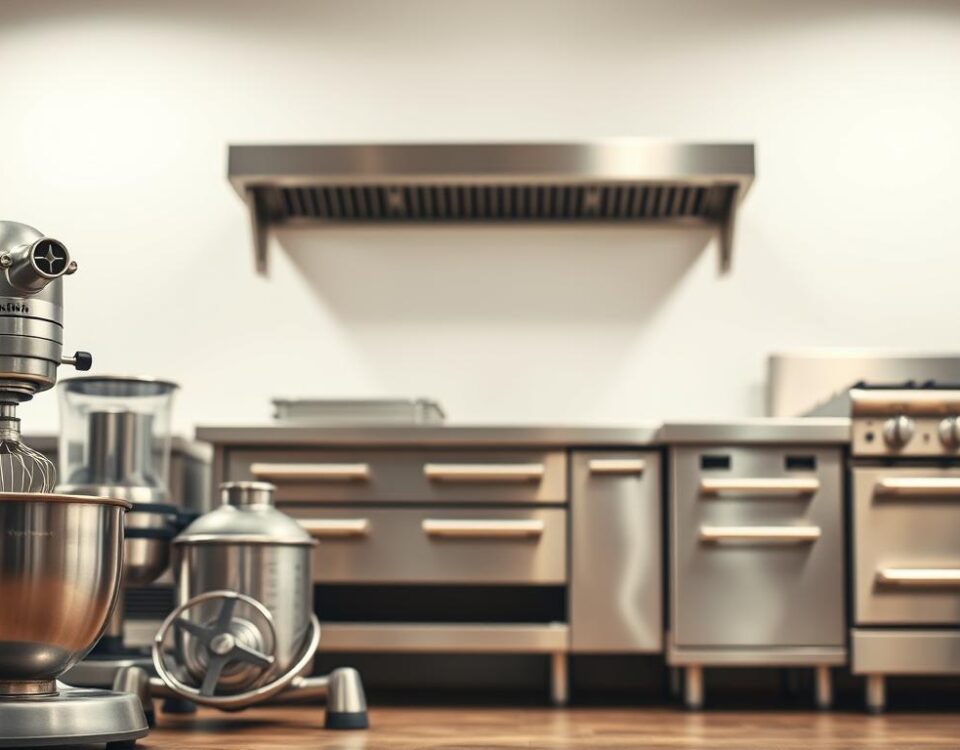
The Most Common Mistakes When Opening Your First Restaurant
August 12, 2025
Restaurant Holiday Marketing Ideas to Double Sales
August 13, 2025Imagine walking into a restaurant where the menu is carefully crafted to not only tantalize your taste buds but also to guide you towards the most profitable dishes for the establishment. This isn’t just a fantasy; it’s a reality achieved through menu engineering. By analyzing sales data and food costs, restaurants can strategically design their menus to maximize profitability.
Did you know that the average customer spends only about three minutes studying a menu before making a decision? This brief window underscores the importance of strategic menu design, combining psychology, design principles, and data analysis to drive sales of high-profit items. By applying these principles, restaurants can transform their menus into powerful tools for increasing profitability.
As we explore the concept of menu engineering further, you’ll discover how to categorize menu items based on their popularity and profitability, and learn the key components involved in this process. Are you ready to unlock the secrets to designing a menu that boosts your restaurant’s bottom line?
Key Takeaways
- Understand the concept of menu engineering and its role in maximizing restaurant profits.
- Learn how to categorize menu items based on their popularity and profitability.
- Discover the importance of strategic menu design in enhancing customer experience.
- Explore the key components involved in menu engineering, including analysis and psychology.
- Find out how to apply menu engineering principles to your restaurant, regardless of its size or type.
What Is Menu Engineering and Why It Matters
Menu engineering is a strategic approach to designing restaurant menus that enhance customer experience and maximize profitability. As a restaurateur, understanding the principles of menu engineering can significantly impact your bottom line.
Definition and Core Concepts
Menu engineering is defined as the strategic analysis and design of restaurant menus to maximize profitability and enhance customer experience. The core concepts include food cost analysis, contribution margin calculation, and understanding the relationship between item popularity and profitability. By analyzing these factors, restaurateurs can categorize menu items into different categories, such as high-profit and low-profit items.
Effective menu engineering involves more than just pricing strategies; it includes psychological elements that influence customer purchasing decisions. For instance, the placement of items on the menu, the description of dishes, and the use of visual cues can all impact customer choices.
The Impact on Restaurant Profitability
The impact of well-engineered menus on restaurant profitability is significant. By optimizing menu items and pricing, restaurants can increase their average check size, boost sales of high-margin items, and reduce food waste. According to statistics, effective menu engineering can increase restaurant profits by 10-15% on average. This is particularly important in today’s competitive restaurant industry, where rising food costs and changing consumer preferences can quickly erode profit margins.
“A well-engineered menu is a powerful tool for any restaurant, allowing owners to balance customer preferences with profitability.” By leveraging menu engineering, restaurateurs can gain valuable insights into customer behavior and preferences, enabling them to make informed decisions about their menu offerings.
The Benefits of Strategic Menu Design
Strategic menu design is a game-changer for restaurants, offering numerous benefits that go beyond aesthetics. A well-crafted menu can have a significant impact on a restaurant’s bottom line, customer satisfaction, and overall operational efficiency.
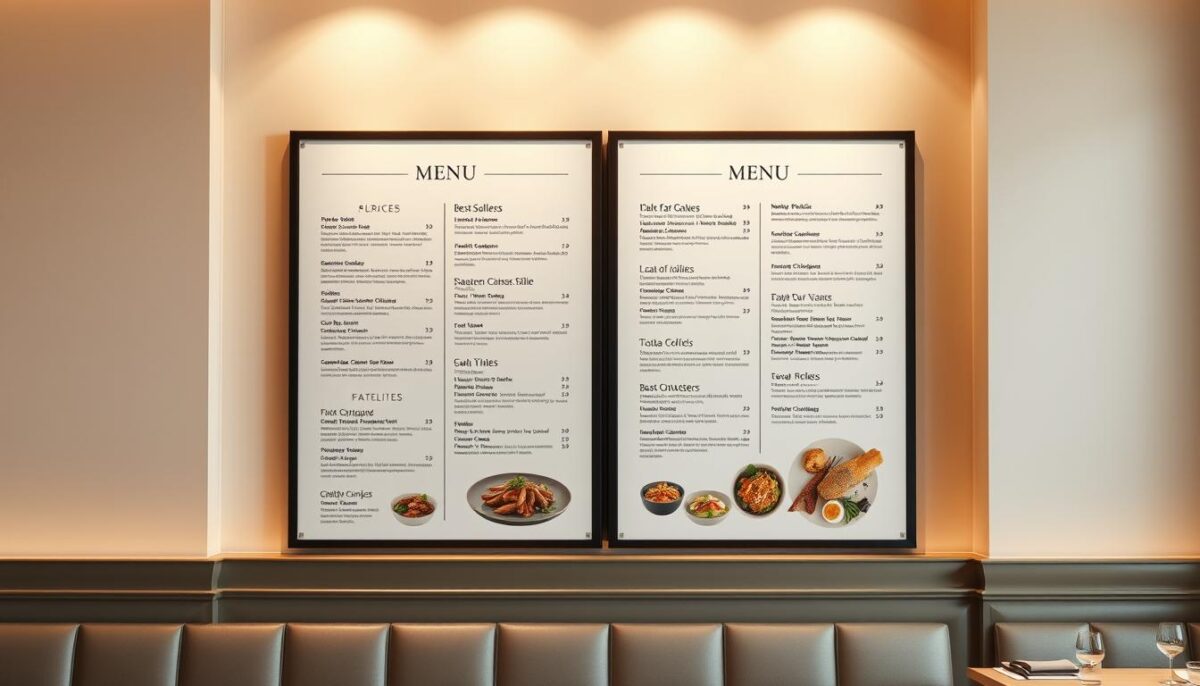
Maximizing Profitability
By identifying high-margin and popular dishes, menu engineering helps maximize profitability. Strategic positioning and eye-catching descriptions entice customers to order profitable items, increasing sales and revenue. This targeted approach ensures that restaurants can optimize their menu offerings to drive sales.
Improving Customer Experience
A well-designed menu improves customer experience by showcasing popular dishes prominently and providing clear descriptions, making it easier for customers to make choices. This thoughtful approach to menu design enhances the overall dining experience, leading to increased customer satisfaction.
Reducing Food Waste
With a well-engineered menu, restaurants can plan ingredient quantities more accurately, reducing unsold perishable food items and minimizing waste. By optimizing their menu offerings, restaurants can reduce their environmental impact while also improving their bottom line.
Step 1: Analyzing Your Menu’s Performance
Analyzing your menu’s performance is the foundation of menu engineering. To make informed decisions about your menu, you need to understand how it’s currently performing. This involves selecting the right time period for analysis, calculating food costs, and determining the contribution margin of each menu item.
Choosing the Right Time Period for Analysis
Selecting the right time period for analysis is crucial. For restaurants that change their menu seasonally, it makes sense to analyze performance during the same period each year. This allows you to assess the menu’s performance during a consistent period. Consider factors like seasonality, recent menu changes, and business cycles when choosing your analysis period.
Calculating Food Cost Per Serving
To calculate the food cost per serving, list all the ingredients used to make a dish, including their quantities and costs. Don’t forget to include seasonings and garnishes. This detailed approach ensures you have an accurate food cost. For example, if a dish requires 0.5 pounds of chicken at $3 per pound, the chicken costs $1.50. Sum the costs of all ingredients to find the total food cost per serving.
Determining Contribution Margin
Your contribution margin is the difference between a menu item’s selling price and its food cost. For instance, if you sell a dish for $15 and its food cost is $4, the contribution margin is $11. This metric is more important than food cost percentage because it directly shows the profit from each item. Use your POS system to gather sales data and identify your most popular items.
| Menu Item | Food Cost | Selling Price | Contribution Margin |
|---|---|---|---|
| Grilled Chicken | $4 | $15 | $11 |
| Veggie Burger | $3 | $12 | $9 |
| Salmon | $6 | $20 | $14 |
By analyzing your menu’s performance, you can identify areas for improvement and make data-driven decisions to optimize your menu. This step is crucial for maximizing profitability and enhancing customer satisfaction.
Step 2: Categorizing Menu Items
The next step in optimizing our menu is to categorize items based on their profitability and popularity. This process involves using the menu engineering matrix, a powerful tool that helps us visualize and categorize our menu items effectively.
The Menu Engineering Matrix Explained
The menu engineering matrix is a simple yet effective way to categorize menu items into four distinct categories based on their profitability and popularity. By plotting our menu items on this matrix, we can quickly identify which items are performing well and which need improvement.
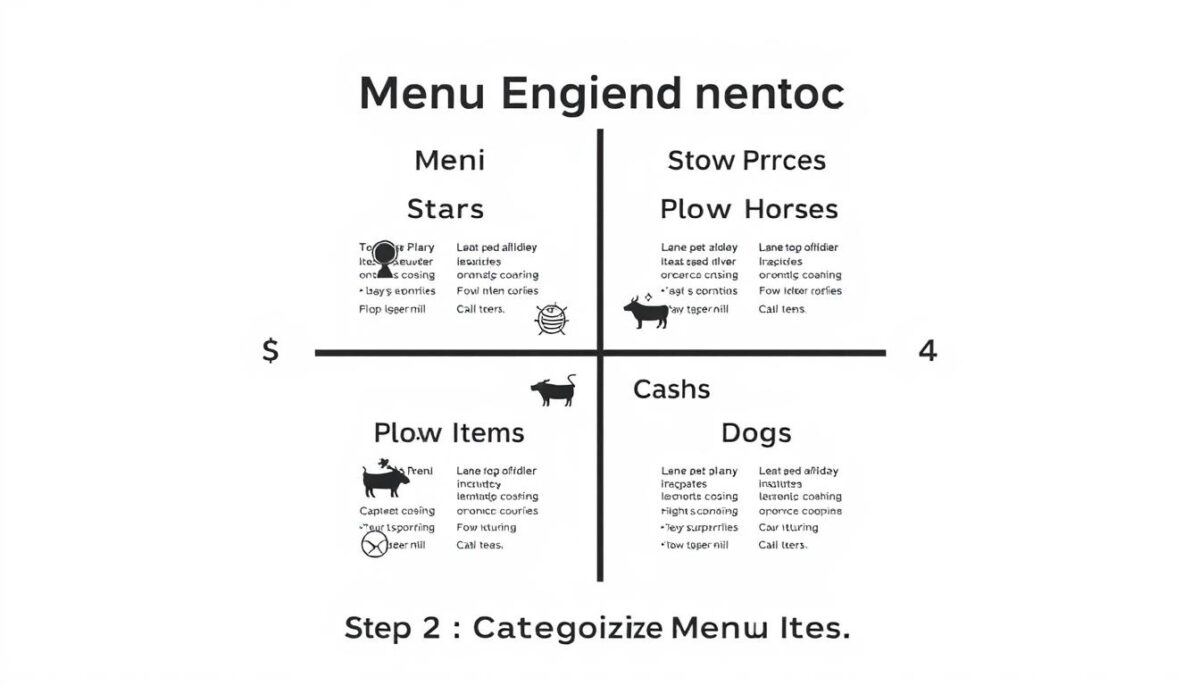
Stars: High Profitability, High Popularity
Stars are menu items that are both highly profitable and very popular. These are the crown jewels of our menu and should be prominently featured. Strategies for Stars include:
- Highlighting them on the menu
- Ensuring consistent quality
- Considering special promotions or bundles
Plowhorses: Low Profitability, High Popularity
Plowhorses are popular items but have lower profitability due to higher food costs. To optimize Plowhorses, we should:
- Review and adjust portion sizes
- Renegotiate supplier prices
- Consider reengineering the dish to increase profitability
Puzzles: High Profitability, Low Popularity
Puzzles are highly profitable but not very popular. To boost their popularity, we can:
- Reposition them on the menu
- Create special promotions or bundles
- Enhance their description to make them more appealing
Duds: Low Profitability, Low Popularity
Duds are both low in profitability and popularity. For these items, we should consider:
- Removing them from the menu
- Reengineering the recipe to increase profitability
- Rebranding or repositioning them to boost popularity
By categorizing our menu items using the menu engineering matrix, we can make informed decisions about how to optimize our menu for maximum profitability and customer satisfaction.
Menu Psychology: Influencing Customer Choices
By applying menu psychology, restaurants can subtly guide customers toward making more profitable choices. Menu psychology focuses on how patrons interact with menus and how menus can be designed to motivate customers to take a specific action, such as ordering more or spending more.
Understanding Eye Movement Patterns
People’s eyes tend to focus on certain areas of a menu depending on its layout. The “golden triangle” theory suggests that most guests will first focus on the center of the page, then move their attention in a triangle to the top right and finally to the top left. Understanding these patterns can help in strategically placing high-profit items.
Strategic Item Placement
Strategic item placement involves positioning high-profit menu items where customers’ eyes naturally land. This technique can significantly increase sales of these items. For instance, placing signature or high-margin dishes at the top or center of the menu can draw more attention to them.
Effective Price Presentation
The way prices are presented can influence customer behavior. Removing dollar signs and decimals can make prices appear as whole numbers, potentially increasing spending. Additionally, techniques like price anchoring, where a higher-priced item is placed next to a lower-priced one to make the latter appear more affordable, can be effective.
The Psychology of Menu Descriptions
Descriptive language in menu descriptions can increase item sales by up to 27%. Using sensory words that evoke emotions and create vivid imagery can make dishes more appealing. For example, describing a dish as “succulent” or “prepared with love” can enhance its appeal.
| Technique | Description | Effectiveness |
|---|---|---|
| Eye Movement Patterns | Understanding how customers scan menus | High |
| Strategic Item Placement | Placing high-profit items in prominent positions | High |
| Effective Price Presentation | Using pricing techniques to influence spending | Medium-High |
| Psychology of Menu Descriptions | Using descriptive language to enhance appeal | High |
Redesigning Your Menu for Maximum Profit
Redesigning your menu is a crucial step in menu engineering, directly impacting your restaurant’s bottom line. A well-crafted menu can significantly boost profitability by highlighting high-profit items and influencing customer choices.
Choosing the Ideal Menu Configuration
The configuration of your menu plays a significant role in its effectiveness. According to Gregg Rapp’s menu engineering methodology, not all menu configurations are created equal. A two-panel menu is considered the best configuration as it allows for optimal organization and visibility of menu items.
Using Visual Cues and Eye Magnets
To draw attention to your high-profit items, use visual cues and eye magnets strategically. Place graphic elements like outlines, icons, photos, or splashes of color next to the items you want to sell the most. This technique will guide customers’ eyes to the desired menu items. However, be cautious not to overdo it, as too many graphics can dilute their effectiveness.

Crafting Compelling Menu Descriptions
Crafting compelling menu descriptions is an art that can significantly influence customer choices. Instead of just listing ingredients, sell the experience. Use vivid language to describe the dish, its origins, and the sensations it evokes. This approach will not only entice customers but also add value to their dining experience.
Color Theory and Typography in Menu Design
The choice of color and typography in your menu design can significantly impact customer perception and behavior. Different colors evoke different emotions, and typography can influence readability and aesthetic appeal. For instance, warm colors like red and orange can stimulate appetite, while cool colors like blue can convey freshness.
| Design Element | Impact on Customer Perception | Example |
|---|---|---|
| Color | Evokes emotions and influences appetite | Warm colors (red, orange) |
| Typography | Influences readability and aesthetic appeal | Serif fonts (classic, traditional) |
| Visual Cues | Guides customer attention to specific items | Icons, images, or graphics next to high-profit items |
By carefully considering these elements and applying the principles outlined in this section, you can redesign your menu to maximize profit and enhance the overall dining experience for your customers.
Implementing Your Menu Engineering Strategy
To turn your menu into a profit-generating tool, you need to effectively implement your menu engineering strategy across all aspects of your restaurant. This involves several key steps that ensure your menu design translates into real financial gains.
Training Your Staff on the New Menu
Your staff plays a crucial role in the success of your menu engineering strategy. Training them on the new menu is essential, focusing on high-profit items to recommend and how to answer customer questions effectively. This empowers them to guide customers towards profitable dishes, enhancing the overall dining experience.
Optimizing Both Physical and Digital Menus
Optimizing both your physical and digital menus is vital. For physical menus, this means strategic item placement and effective price presentation. For digital menus, particularly those used on online ordering platforms, the focus should be on user experience and intuitive navigation. Ensuring consistency across both formats helps maintain a cohesive brand image.
- Use high-quality images for menu items.
- Ensure menu descriptions are compelling and accurate.
- Optimize menu layout for easy navigation.
Setting a Regular Schedule for Menu Analysis
Menu engineering is not a one-time task but an ongoing process. Regular menu analysis is necessary to assess performance, identify areas for improvement, and adjust your strategy accordingly. By analyzing sales data and customer feedback, you can refine your menu to better meet customer preferences and enhance profitability.
- Analyze sales data monthly to identify trends.
- Use customer feedback to inform menu changes.
- Adjust menu items based on performance data.
By implementing these strategies, you can ensure your menu engineering efforts yield tangible results, driving profitability and customer satisfaction in your restaurant.
Conclusion: Turning Your Menu into a Profit-Generating Tool
As we conclude our exploration of menu engineering, it’s clear that this strategic approach can revolutionize your restaurant’s profitability. By analyzing your menu items’ performance, categorizing them based on profitability and popularity, and redesigning your menu layout, you can significantly boost your profit.
Menu engineering is an ongoing process that requires regular analysis and adjustment. It’s not a one-time project, but a continuous effort to optimize your menu items and maximize profit. By doing so, you’ll not only increase sales but also enhance customer experience and reduce food waste.
To get started, select a timeframe, cost your menu, and categorize each dish based on its popularity and profitability. Use the menu engineering matrix to inform your decisions. By following these steps and regularly reviewing your menu performance using data and sales insights, you’ll be on your way to creating a profit-generating tool that drives business success.
FAQ
What is the primary goal of menu engineering?
The primary goal of menu engineering is to maximize profitability by analyzing and optimizing the performance of menu items, taking into account factors such as food cost, pricing, and customer preferences.
How do I determine the profitability of my menu items?
To determine the profitability of your menu items, you need to calculate the contribution margin, which is the selling price minus the food cost. This will help you identify which items are generating the most profit.
What is the menu engineering matrix, and how does it work?
The menu engineering matrix is a tool used to categorize menu items into four quadrants based on their profitability and popularity. It helps you identify “stars” (high profitability, high popularity), “plowhorses” (low profitability, high popularity), “puzzles” (high profitability, low popularity), and “duds” (low profitability, low popularity).
How can I influence customer choices through menu design?
You can influence customer choices by using strategic item placement, effective price presentation, and compelling menu descriptions. Understanding eye movement patterns and using visual cues can also help draw attention to profitable items.
How often should I analyze and update my menu?
It’s recommended to analyze and update your menu regularly, ideally every 3-6 months, to ensure it remains optimized for profitability and customer preferences.
What role does pricing play in menu engineering?
Pricing plays a crucial role in menu engineering, as it directly affects profitability. You need to balance prices with customer expectations and perceived value to maximize sales and revenue.
Can menu engineering be applied to digital menus?
Yes, menu engineering principles can be applied to both physical and digital menus. Optimizing your digital menu is essential, as more customers are ordering online or through mobile apps.
